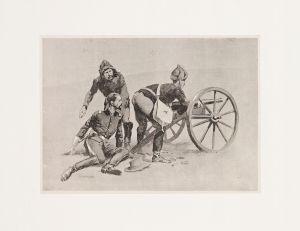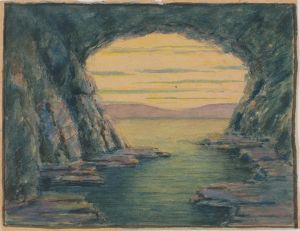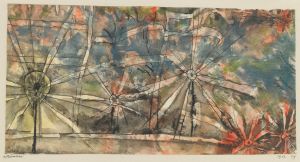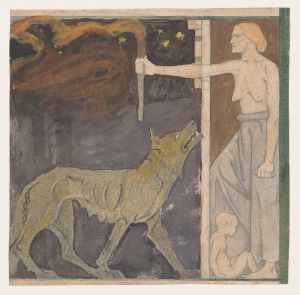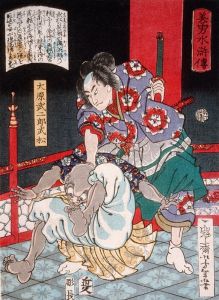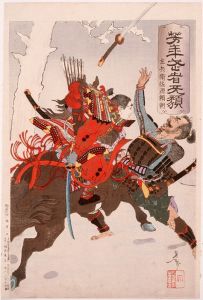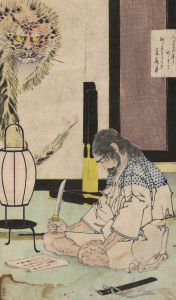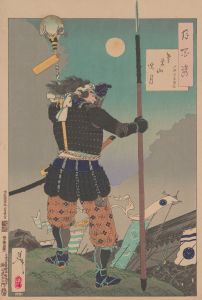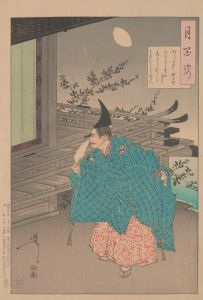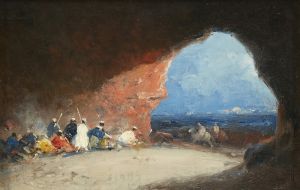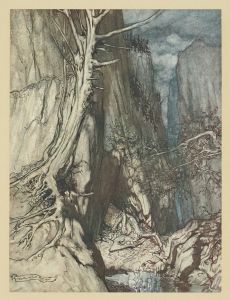
Nitta Shirō Tadatsune Entering a Cave with a Torch
A hand-painted replica of Tsukioka Yoshitoshi’s masterpiece Nitta Shirō Tadatsune Entering a Cave with a Torch, meticulously crafted by professional artists to capture the true essence of the original. Each piece is created with museum-quality canvas and rare mineral pigments, carefully painted by experienced artists with delicate brushstrokes and rich, layered colors to perfectly recreate the texture of the original artwork. Unlike machine-printed reproductions, this hand-painted version brings the painting to life, infused with the artist’s emotions and skill in every stroke. Whether for personal collection or home decoration, it instantly elevates the artistic atmosphere of any space.
Tsukioka Yoshitoshi (1839–1892) was a renowned Japanese artist, widely recognized for his contributions to the ukiyo-e genre of woodblock printing and painting. One of his notable works is "Nitta Shirō Tadatsune Entering a Cave with a Torch," which is part of his series "New Forms of Thirty-Six Ghosts" (Shinkei Sanjūrokkaisen), created between 1889 and 1892.
The artwork depicts the historical figure Nitta Shirō Tadatsune, a samurai from the early Kamakura period (1185–1333). Tadatsune was a member of the Nitta clan, which played a significant role in the Genpei War (1180–1185), a conflict between the Taira and Minamoto clans that led to the establishment of the Kamakura shogunate. Although Tadatsune himself is not as prominently featured in historical records as other members of the Nitta clan, he is often celebrated in folklore and literature for his bravery and adventurous spirit.
In Yoshitoshi's print, Tadatsune is shown entering a dark cave, holding a torch to light his way. The scene is imbued with a sense of mystery and tension, characteristic of Yoshitoshi's ghost and supernatural-themed works. The cave setting and the use of light and shadow create a dramatic atmosphere, highlighting Tadatsune's courage as he ventures into the unknown.
Yoshitoshi's "New Forms of Thirty-Six Ghosts" series is known for its innovative approach to traditional themes, blending classical Japanese folklore with a modern artistic sensibility. The series includes various depictions of ghosts, spirits, and supernatural events, reflecting the Meiji period's (1868–1912) fascination with the mysterious and the macabre. Yoshitoshi's work is distinguished by his dynamic compositions, expressive use of color, and intricate detailing, which have earned him a lasting legacy in the world of Japanese art.
"New Forms of Thirty-Six Ghosts" was one of Yoshitoshi's final series, completed shortly before his death in 1892. It represents the culmination of his artistic development and his deep engagement with the themes of life, death, and the supernatural. The series was well-received and remains highly regarded by collectors and scholars of ukiyo-e.
Yoshitoshi's portrayal of Nitta Shirō Tadatsune in this particular print captures the essence of the samurai's legendary valor and the eerie allure of the supernatural. It serves as a testament to Yoshitoshi's skill in storytelling through visual art, as well as his ability to evoke powerful emotions and narratives within a single image.
Overall, "Nitta Shirō Tadatsune Entering a Cave with a Torch" is a significant work within Tsukioka Yoshitoshi's oeuvre, exemplifying his mastery of the ukiyo-e form and his unique artistic vision. It continues to be appreciated for its historical and cultural significance, as well as its artistic excellence.





